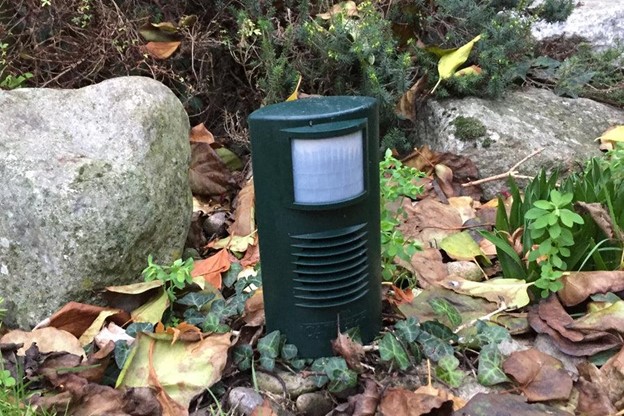
Cats are wonderful companions, but sometimes they may cause damage to yards, gardens, or even specific areas of the house.
If you prefer finding a strong deterrent that will help keeping curious cats away from delicate places. Regardless of dealing with your own inquisitive tom cat or the adventurous cat of a neighbor.
However, both the options will be examined in this blog, along with their advantages, disadvantages, and efficacy. Please note, the available electronic cat repellents and natural cat deterrents are the two main tactics and methodologies to deal with cats.
Understanding Natural Cat Deterrents
What Are Natural Cat Deterrents?
Natural cat deterrents are basically the solutions that keep cats away by using non-poisonous, natural ingredients or modifying the surroundings.
In various cases, you might need to examine and understand that whether you should use natural car deterrents or not.

Applying anything that irritates the cat's senses—taste, smell, or touch— May help avoiding injury to the cat. And, dealing with non-injurious methodology is something that you may prefer.
These natural cat deterrents may be the natural sprays, plants that scare cats away like neem, or materials that cats don't like. Typical natural deterrents include the following:
- Plants like lavender, rosemary, or coleus canina: These vegetation emit scents that cats discover unpleasant.
- Citrus sprays: Cats tend to dislike sturdy smells like citrus, making lemon or orange peels and sprays powerful.
- Vinegar: Another fragrance-primarily based deterrent that can be utilized in diluted shape as a spray.
- Textural deterrents: Cats dislike taking walks on tough or uncomfortable surfaces, so laying down pine cones, bird wire, or maybe aluminum foil can be powerful.
Benefits of Natural Cat Deterrents
Natural cat deterrents are well-liked by homeowners, gardeners, and puppy owners alike since they provide a number of benefits apart from non-injurious way of getting rid of cats.
- Readily available: By using items found within the house or at the local food store, several organic deterrents may be made. Generally speaking, they are easy to create and don't need a special tool.
- Non-poisonous and secure: The majority of herbal repellents are formulated with ingredients that are safe for humans and cats alike. These deterrents are typically mild and biodegradable, so there is no risk to children, pets, or the environment.
- Eco-pleasant: Since natural deterrents are made of natural materials, they don't contribute to pollution or the accumulation of hazardous chemicals in the environment.
- Inexpensive: Since natural deterrents can often be made using supplies you already own, like as vinegar or citrus peels, they are typically inexpensive but effective.
Drawbacks of Natural Cat Deterrents
Natural deterrents offer many benefits, but they also have several disadvantages that limit their efficacy:
- Inconsistent results: Like humans, cats have personal preferences. Herbal deterrents are less predictable since what works for one cat may not work for another.
- Labor-in depth: Because you must constantly check the area and adhere to sparkling deterrents, maintaining a natural repellent strategy may take some time.
- Short-time period effectiveness: Natural repellents, particularly those scented with citrus or vinegar, often lose their potency over time and must be often reapplied to be effective.
- Limited to small regions: A lot of herbal deterrents work well in cramped, compact areas, but they may not be as effective in large yards or gardens.
Exploring Electronic Cat Repellents
What Are Electronic Cat Repellents?
By taking advantage of cats' sensitivity to certain stimuli, these devices are designed to deter cats without endangering them. Electronic cat repellents are gadgets like water sprayers, motion detectors, and ultrasonic noises that are intended to frighten cats away. Several typical types include:
- Motion-activated sprayers: When a cat crosses the sensor, the tool releases a burst of water, startling the animal and discouraging destiny visits.
- Ultrasonic repellents: These gadgets emit excessive-frequency sound waves which can be unpleasant to cats however inaudible to human beings.
- Vibration and shock devices: Some mats or fences use slight vibrations or static shocks to deter cats from entering certain areas.

Benefits of Electronic Cat Repellents
Many people believe that using electronic repellents is a cutting-edge and practical solution to dealing with cat incursions. Among their benefits are:
- Minimal preservation: Once installation, digital devices often require little attention. They are greater of a “set it and forget about it” answer, especially as compared to natural deterrents.
- Highly powerful: Electronic repellents commonly supply steady results via triggering an automatic response whilst a cat enters the covered place. The mixture of technology and immediacy tends to discourage cats quickly.
- Long-term deterrent: These gadgets can preserve to function over lengthy periods, reducing the want for common intervention.
- Coverage for larger regions: Electronic repellents can guard larger areas, making them appropriate for large gardens or open yards.
Drawbacks of Electronic Cat Repellents
While they offer several benefits, digital cat repellents are not without their drawbacks:
- Aesthetic concerns: Some digital repellents, particularly movement-activated sprayers, may not mixture in aesthetically with gardens or outdoor areas, creating a visible distraction.
- Cost: Electronic repellents may be substantially greater pricey than natural deterrents, each in terms of preliminary purchase and ongoing energy or battery requirements.
- Dependence on energy: Electronic repellents want batteries or a electricity supply to feature, meaning they could stop running suddenly if now not properly maintained.
- Potential pain for different animals: While those gadgets are designed for cats, other pets or wildlife can also be affected, that could result in unintended outcomes.
Comparing Natural and Electronic Cat Repellents
Which Solution Is Right for You?
The decision between electrical and herbal cat deterrents mostly comes down to your budget, personal preferences, and the area you want to keep safe.
However, digital repellents are definitely a better option if you're dealing with chronic cats or want to cover a larger area. They provide a more consistent, long-term solution and are especially effective in areas where it is difficult to uncover or reapply deterrents on a regular basis.
Herbal deterrents could be a better option if you're looking for a cheap, environmentally friendly way to protect a tiny garden bed or a small outdoor space. For individuals who prefer a do-it-yourself approach, they are safe, simple to use, and perfect.
The best course of action will ultimately depend on how serious your cat problem is, how much time you're willing to invest in preservation, and whether or not the expense of digital gadgets is within your means.
DIY Cat Repellent Options
If you prefer a hands-on approach, there are several methods to create your own homemade cat repellents at home. Whether you choose an inexpensive technological device or a herbal remedy, do-it-yourself options may be entertaining and economical.

How to Make Your Own Natural Cat Deterrent
Making your own homemade cat repellent is easy and only requires a few supplies. Here are some well-known homemade recipe ideas:
- Vinegar answer: In a twig bottle, mix equal parts vinegar and water; spritz areas where cats are creating problems.
- Citrus spray: Combine water and the juice of one lemon or orange, then mist the areas you want to keep cats away from. The effect may be enhanced by adding a few drops of essential oils like peppermint or eucalyptus.
- Pepper and spice mix: To keep cats away, scatter chili powder, cayenne, or ground black pepper throughout your grass. Use caution while using this method since some spices might irritate a cat's skin if they come into contact with it.
Affordable Electronic Repellent Alternatives
If the cost of commercial digital repellents is prohibitive, you may try more affordable alternatives, which include:
- DIY water sprayer: Create a simple water spray machine the usage of a lawn hose and a sprinkler attachment. Set it up with a movement sensor, and you’ll have a budget-friendly model of a business motion-activated sprayer.
- Motion-activated lighting fixtures: Set up cheaper movement-detecting lights in your backyard. The surprising flash of mild can be enough to startle cats and discourage them from returning.
Final Words
Both natural cat deterrents and digital repellents provide effective ways to preserve cats out of specific areas, however the high-quality solution will depend on your man or woman situation.
Natural deterrents are safe, green, and cheaper, but may additionally require common reapplication and tracking.
On the other hand, digital repellents provide a long-time period, hands-off approach that’s best for larger regions, even though they come with a higher fee and capacity effect on different animals.
For people who need to attempt a DIY approach, there are lots of methods to create powerful herbal deterrents or low-fee electronic options.
Whichever technique you pick, shielding your garden, backyard, or domestic from undesirable tom cat traffic may be achieved with a touch creativity and the right gear.



